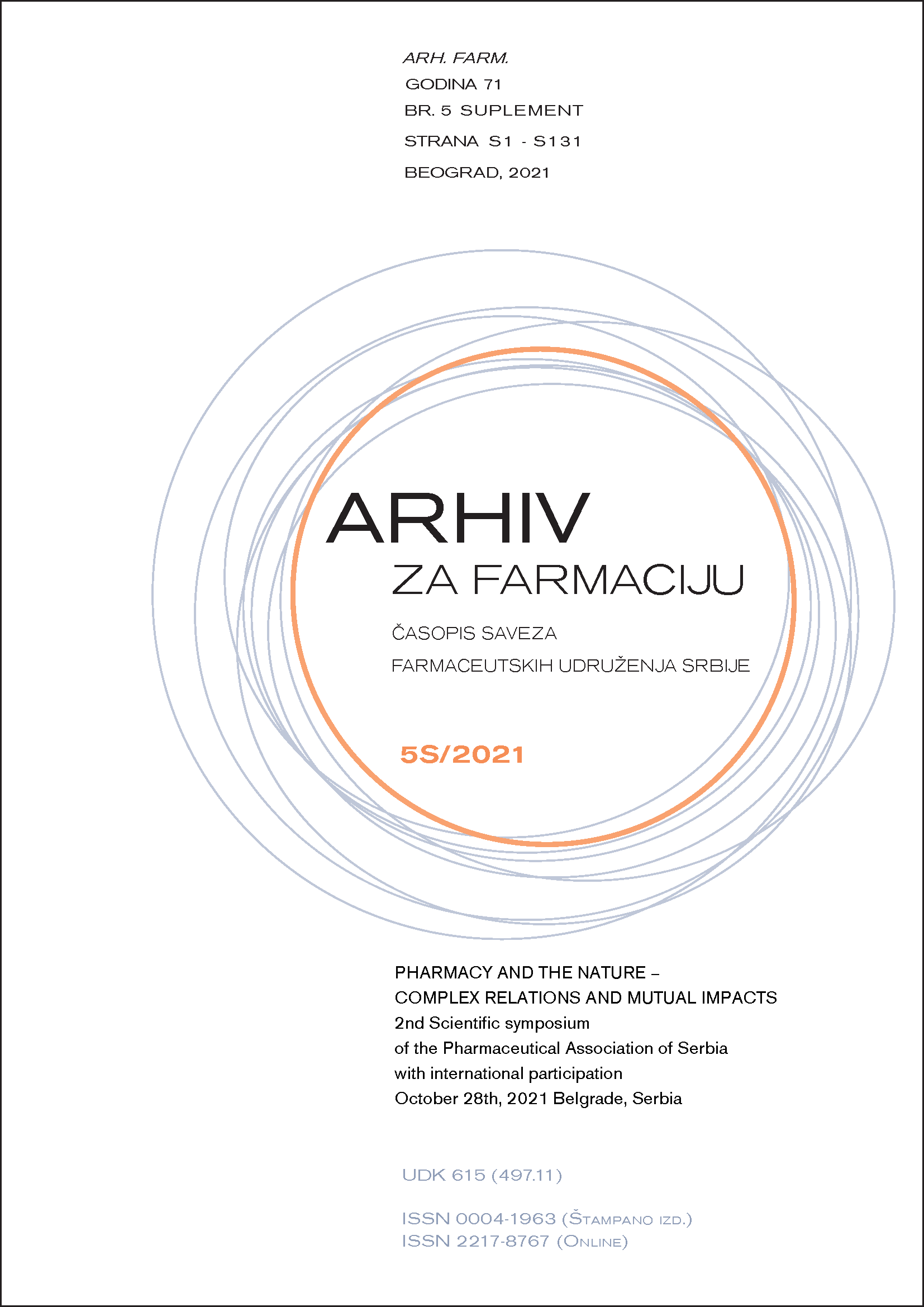PHARMACY AND NATURE - PLENTY OF DIVERSITY
Abstract
In the most general sense, nature represents the unity of soil, water and air and all living beings. Man and all his activities affect life on our planet in different ways, often through gross violations of natural laws and fine, subtle connections and mutual influences of the environment and different species and forms of the living world. Numerous initiatives over the last decades indicate that every human activity and "world of people" should be observed, estimated and evaluated from the aspect of environmental impact. The development of the economy and society as a whole must be based on technologies that are in harmony with nature and that use natural resources in an organized and controlled manner that does not lead to devastation, violation of natural laws, and environmental disasters.
In the areas of health, preservation and improvement of the health of individuals and society, nature is important not only as a source of pharmaceutically active and auxiliary substances, but also as a source of ideas, problems and solutions that are hidden somewhere, and usually simple, but should be discovered and understood. From the idea of a pharmaceutical product, through the development of materials and technologies for their production, analysis and control, application in different patient populations, to the proper disposal and destruction of used and unused materials and products, everything is connected and has an impact on land, water and air, as well as to all living beings on this planet. In the scientific and research sense, but also through the professional aspect of pharmacy, pharmacognosy is most often associated with nature, as the main source of natural medicinal products.
In recent decades, pharmacognosy, as a concept and as a scientific discipline within the pharmaceutical sciences, has changed its focus. From the applied, descriptive botanical science, from the sixties of the last century, it moved to the chemical, biochemical and economic aspects of natural products (drugs) and their ingredients. And then in the 21st century, it becomes "a science that focuses on the study of the relationship between the structure and activity of ingredients, the therapeutic and use potential that natural products (drugs) have because of the ingredients they contain." Scientific pharmacognosy, today, should also include concrete assistance to herbal medicine manufacturers to provide safe and effective products; through research into bioavailability, bioequivalence, through standardization and quality control, but also through proper design of pharmaceutical forms and clinical studies to examine the efficacy of these medicinal products. Also, due to the growing number of different kind of products on the market, whose application is based on the presence of secondary metabolites of plants, it is necessary for pharmacists to be able to essentially understand those products, in proper, quality and safe way to produce, control and recommend them to users (1,2,3).
Fundamental research within pharmacognosy still aims to use the biological diversity of plants, algae, mosses, fungi, animals and microorganisms (on land and in the aquatic environment) to discover new compounds with some pharmacological activities. Diversity in nature is not only seen through the number of living organisms. The diversity of chemically pharmacologically active structures, isolated from natural organisms, is very significant. According to certain authors, these compounds have more numerous and complex steric structures in relation to those obtained by organic synthesis. There are about 30,000 of them in the databases; about 13% were isolated from animals, 33% from bacteria, 26% from fungi, and 27% from plants (1).
We are still looking for medicinal substances that will prevent the growth of malignant cells, which will prevent or cure inflammatory processes, prevent and cure infection caused by pathogenic microorganisms, and affect neurodegenerative changes. Isolated compounds are used as such, their structure is partially changed or they serve as a model of a substance for the synthesis of completely new medicinal compounds. Here are described several examples of drugs whose active components originate from plants or have partially altered structures (acarbosa, artemeter, docetaxel, paclitaxel, galantamine, camptothecin-irinothecan-topothecan...) (1). Prostratin (Homolanthus nutans, Euphorbiaceae), resveratrol, huperzine A, as well as artemisinin or betulinic acid are still the subject of clinical trials.
Also, herbal extracts are still being studied as active ingredients of herbal medicines, which achieve effects through the synergism of their ingredients. Researchers in the field of natural products are also engaged in current research on the use of waste materials to create new useful products and more complete use of biomass. In the presentation itself, different approaches to the research of natural medicinal products will be explained and documented in more detail.
It should also be emphasized that the largest amount of plant raw material for the isolation of compounds or the production of extracts is now produced by field production; production by fermentation of microorganisms is also used, and very rarely in bioreactors using cell cultures (taxol and ginseng biomass, for example). Equipment and technology are available, but problems arise regarding the price of the products obtained in this way.

